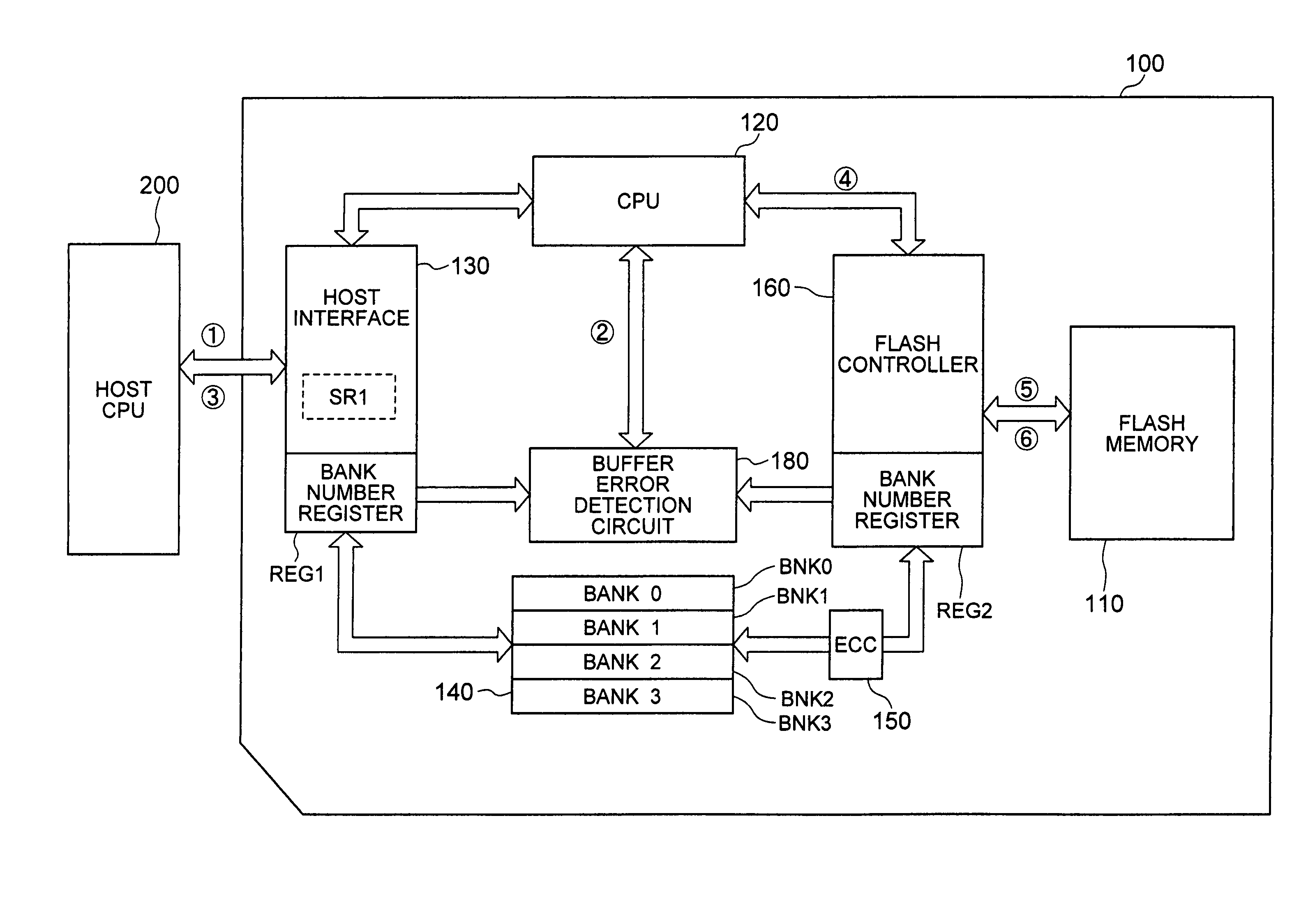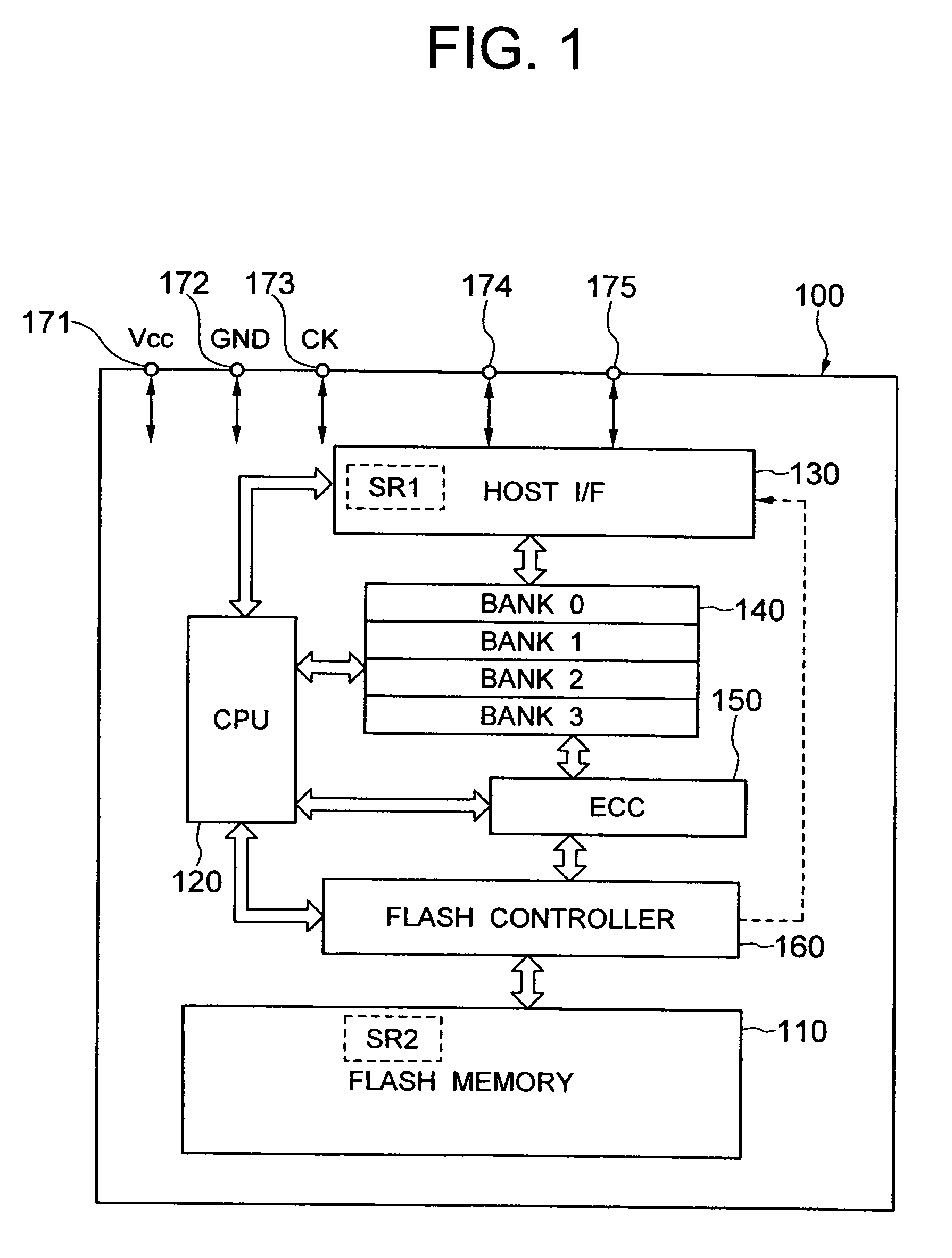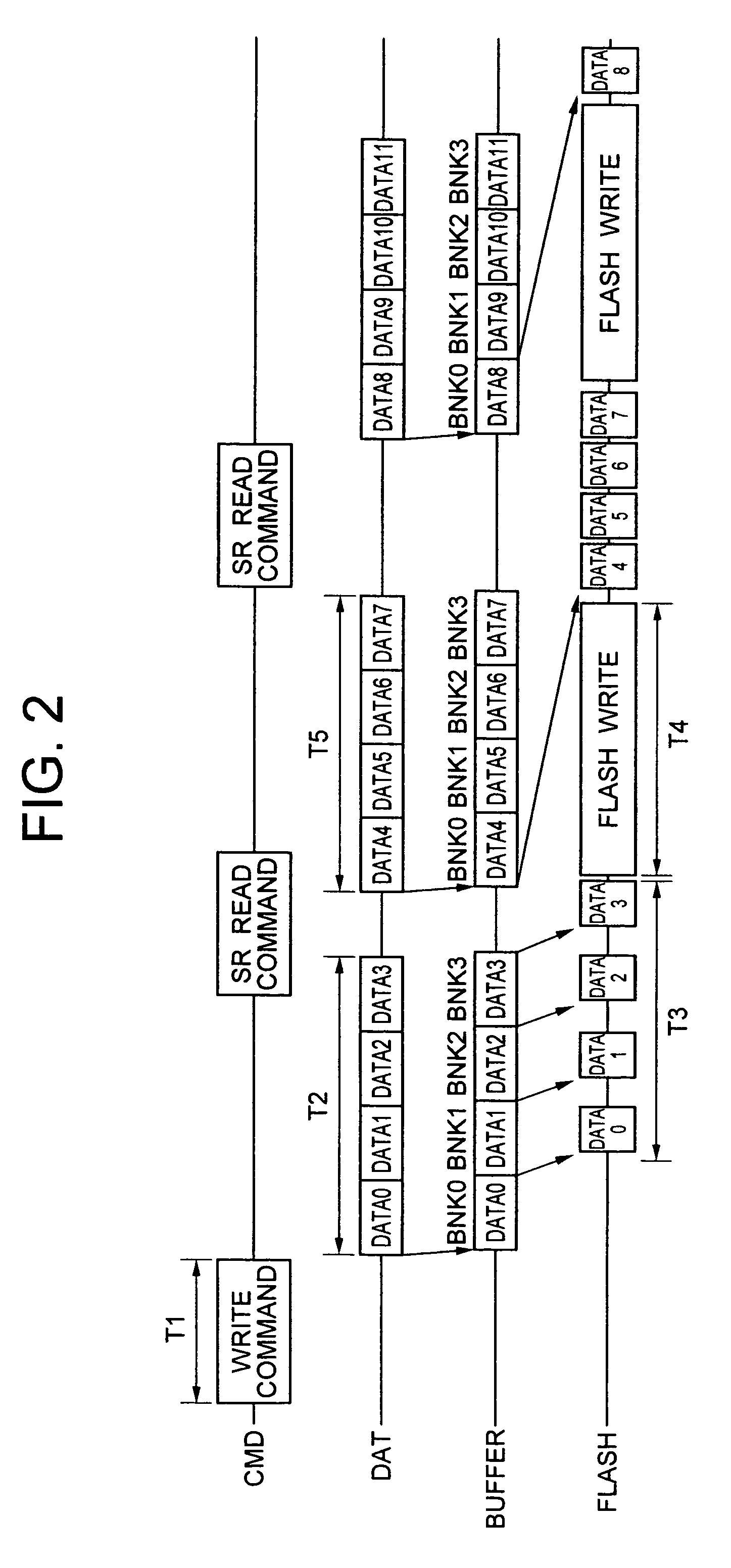Non-volatile memory device and data storing method
a non-volatile memory and data storage technology, applied in the direction of memory adressing/allocation/relocation, digital storage, instruments, etc., can solve the problems of large overhead and long total write time, and achieve the effect of reducing the overhead of write data transfer, reducing the time required for writing data, and facilitating the next data
- Summary
- Abstract
- Description
- Claims
- Application Information
AI Technical Summary
Benefits of technology
Problems solved by technology
Method used
Image
Examples
first embodiment
[0040]the write data transfer method that is used when the present invention is applied to the memory card with the configuration described above will be described with reference to the timing diagram in FIG. 2. In the description below, the buffer memory 140 is assumed to include four banks, BNK0–BNK3, each with the capacity of 512 bytes.
[0041]In the first embodiment, when data is written in the memory card, a data transfer command and a write address are first sent from an external host CPU to the external terminal 174 of the memory card (period T1). Then, write data is transferred from the host CPU to the external terminal 175 of the memory card. The transferred data is stored sequentially into banks BNK0–BNK3 of the buffer memory 140 via the interface 130 (period T2). The transmission of the command and the address and the transfer of write data described above are performed serially.
[0042]Concurrently with the transfer of write data to the buffer memory 140 described above, wri...
third embodiment
[0060]the write data transfer method for use on the memory card according to the present invention will be described with reference to the timing diagram in FIG. 6.
[0061]The transfer method in the third embodiment is similar to that in the second embodiment. That is, after data DATA0–DATA3 has been transferred to all banks BNK0–BNK43 of the buffer memory 140, data, DATA4–DATA7, to be written into the next sector is immediately transferred without checking if data has been transferred from the buffer memory 140 to the flash memory 110. The difference from the transfer method in the second embodiment is that a buffer error occurs when an attempt is made to transfer the next data if all banks contain data not yet transferred as shown in the buffer memory status diagram at the bottom of FIG. 6 (timing t2). In the buffer memory status diagram at the bottom of FIG. 6, a shaded bank indicates that data from the host CPU is stored but the data is not yet transferred to the flash memory.
[006...
PUM
 Login to View More
Login to View More Abstract
Description
Claims
Application Information
 Login to View More
Login to View More - R&D
- Intellectual Property
- Life Sciences
- Materials
- Tech Scout
- Unparalleled Data Quality
- Higher Quality Content
- 60% Fewer Hallucinations
Browse by: Latest US Patents, China's latest patents, Technical Efficacy Thesaurus, Application Domain, Technology Topic, Popular Technical Reports.
© 2025 PatSnap. All rights reserved.Legal|Privacy policy|Modern Slavery Act Transparency Statement|Sitemap|About US| Contact US: help@patsnap.com



